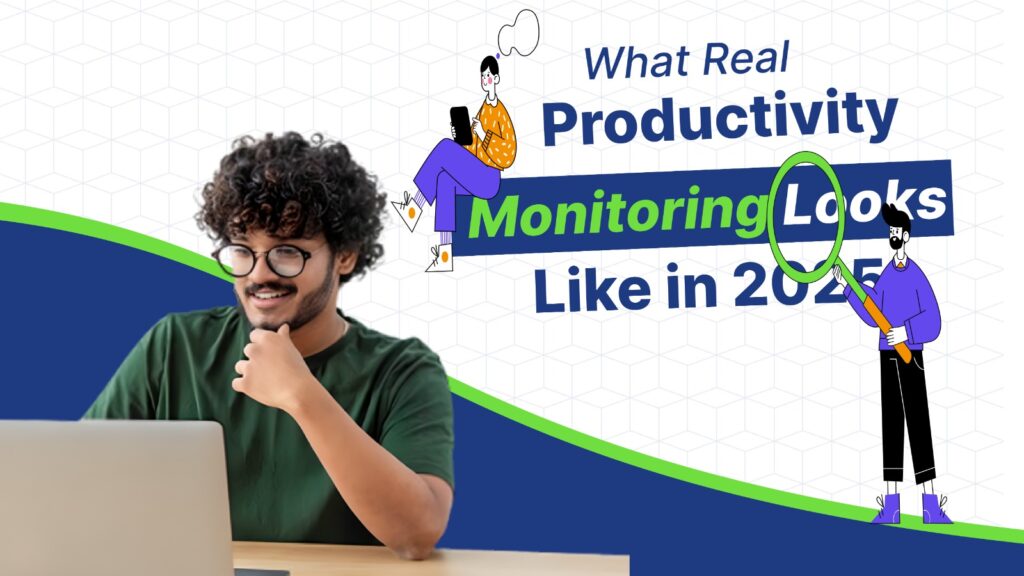What Real Productivity Monitoring Looks Like in 2025
Introduction
By 2025, productivity measurement is evolving with intelligent automation and predictive analytics. Businesses need adaptive frameworks for hybrid and remote models. Next-gen productivity monitoring trends 2025 highlight AI-powered insights and data-driven visibility across teams. Rather than tracking only hours, companies now focus on outcomes. This shift enhances operational efficiency while building transparency. Modern systems like SAMPAT bring unified tracking that improves workforce visibility. As organizations transform, leaders require smart platforms to manage workloads. Consequently, advanced monitoring ensures higher accountability across global environments.
Shifting Toward Real-Time Insights
Earlier, teams relied on outdated tracking tools. Now, real-time monitoring creates dynamic visibility. Managers receive instant alerts about delays or performance changes. However, they avoid micromanagement by focusing on results. Next-gen monitoring emphasizes employee outcomes over activity logging. SAMPAT integrates machine learning to highlight anomalies automatically. Therefore, leaders act proactively before problems expand. In contrast, legacy tools lacked predictive capability. The integration of automation reduces workload overheads. Furthermore, continuous feedback loops empower employees. This culture promotes transparency while aligning business goals.
Predictive Analytics for Workforce Planning
Workforce planning has become predictive rather than reactive. Platforms analyze patterns and recommend scheduling shifts early. These insights minimize resource gaps while avoiding burnout. Next-gen productivity monitoring trends 2025 emphasize predictive workforce management. Because of AI, managers can anticipate risks accurately. Predictive dashboards enhance decision-making for distributed teams. Additionally, planning becomes flexible across time zones. With SAMPAT, organizations visualize utilization across departments easily. Since models detect workload imbalances, corrective actions occur quickly. Predictive analytics ensures long-term workforce sustainability. Thus, businesses stay competitive in dynamic markets.
Integration with Collaboration Platforms
Collaboration tools are critical for productivity ecosystems. Monitoring tools must integrate seamlessly with them. For instance, workflow activity inside project tools generates measurable data. By connecting data streams, organizations gain deeper productivity insights. Next-gen monitoring platforms track communication trends across Slack or Teams. Additionally, smart alerts reduce communication bottlenecks significantly. SAMPAT captures collaboration metrics for improved project visibility. Because of this integration, workflows stay transparent. Moreover, team alignment improves across departments. As monitoring evolves, collaboration integration will remain central. Thus, visibility fosters consistent productivity outcomes everywhere.
Employee Experience and Trust Balance
Monitoring practices must respect employee trust. Excessive surveillance lowers morale quickly. However, transparency builds engagement. Next-gen productivity monitoring trends 2025 balance performance with autonomy. Platforms must show outcomes without excessive intrusions. For example, SAMPAT highlights business results, not keystrokes. Employees then feel valued rather than watched. This ethical shift drives loyalty across workplaces. Furthermore, user dashboards enhance clarity. Workers receive feedback loops that encourage growth. Consequently, productivity improves sustainably. Organizations that embrace trust-based monitoring benefit long term. Hence, balancing accountability and autonomy is essential.
Automation and Compliance Alignment
Modern productivity monitoring aligns closely with compliance. Automated systems track policy adherence without manual audits. Because regulations evolve, automation reduces compliance risks. Platforms like SAMPAT create audit-ready productivity records instantly. Moreover, automated alerts ensure managers stay informed. Next-gen monitoring improves documentation accuracy. In addition, process automation reduces repetitive reporting. Therefore, compliance workloads shrink significantly. This capability becomes essential for regulated industries. Alongside efficiency, compliance reporting builds organizational credibility. As monitoring matures, automation drives resilience. Hence, next-gen systems align monitoring with both compliance and growth.




